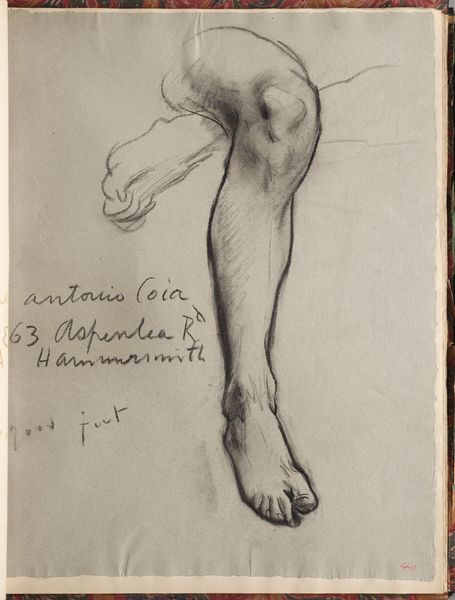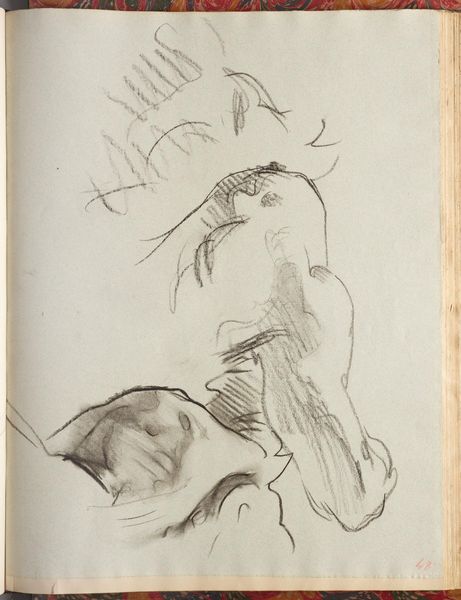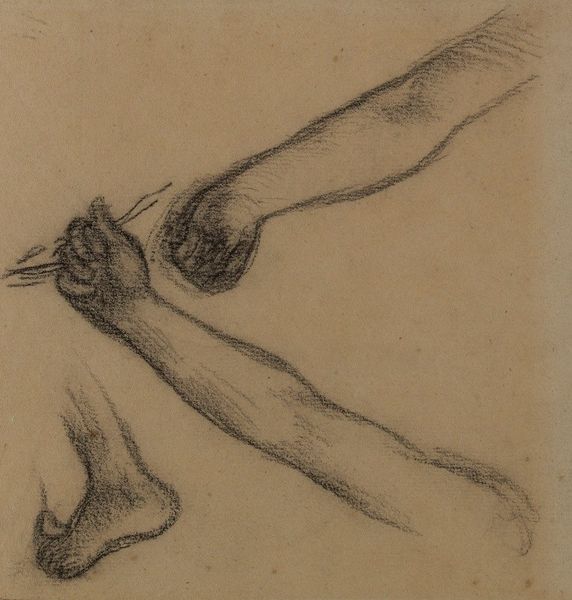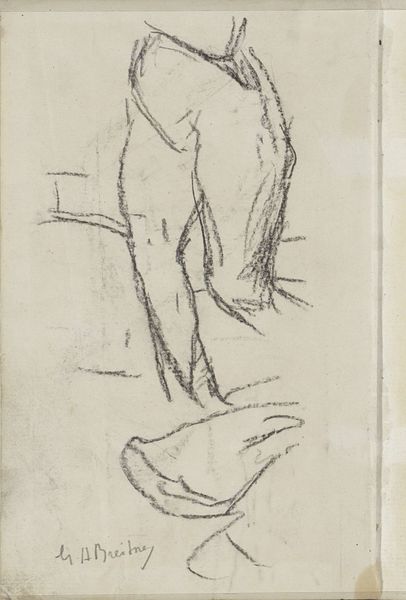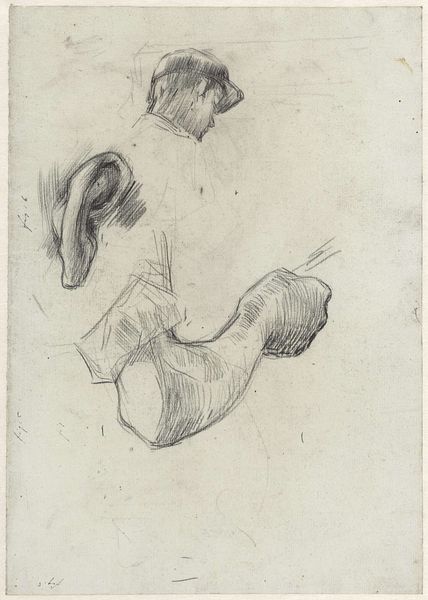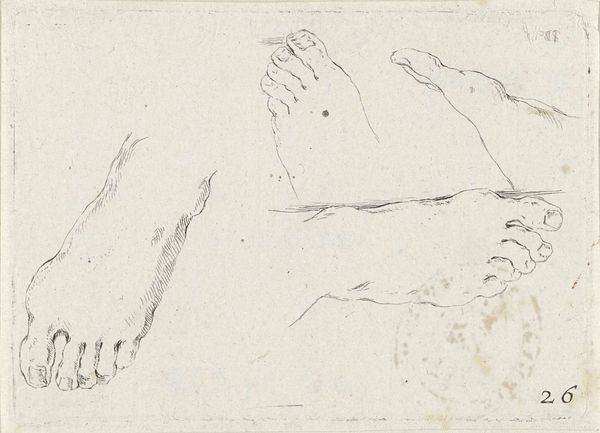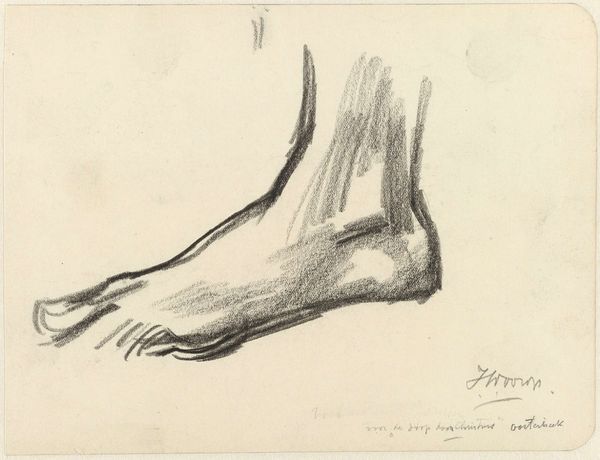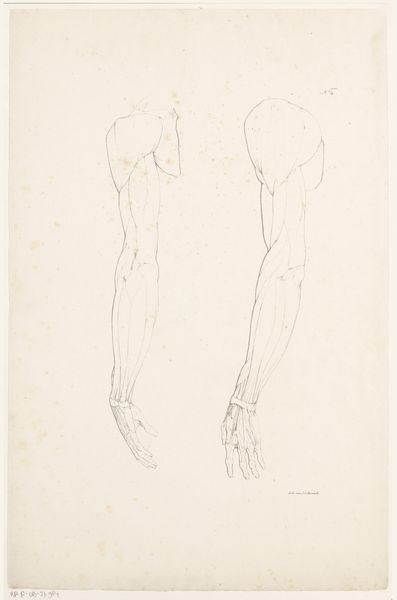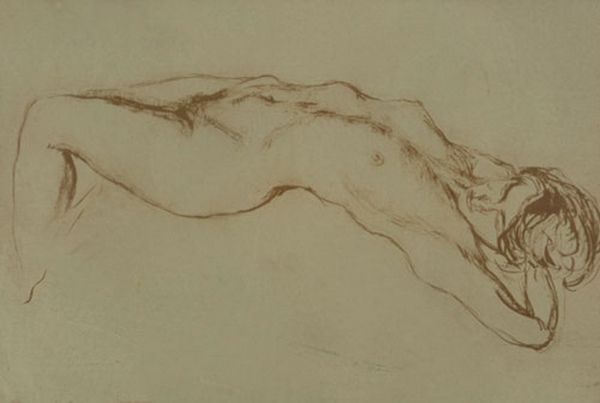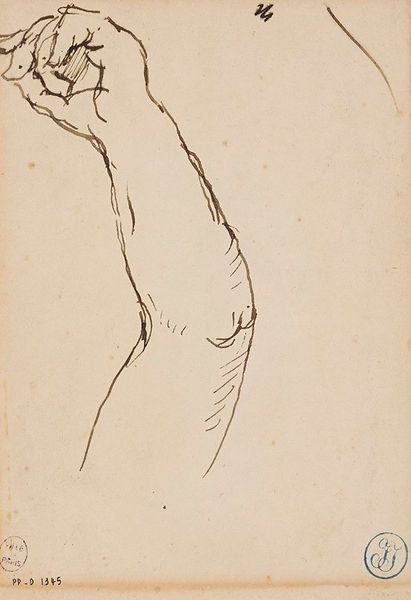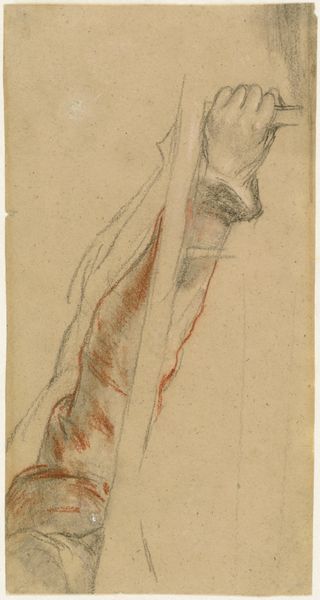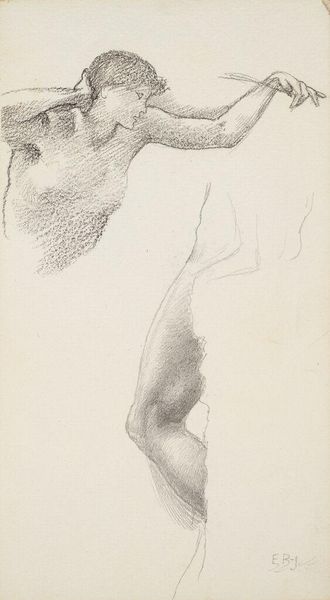
Copyright: Public Domain: Artvee
Editor: This is John Singer Sargent's "Studies for 'Triumph of Religion'," created sometime between 1891 and 1916. It's a pencil and charcoal drawing showing studies of arms and hands. The musculature feels so precise; it’s quite striking! What are your initial thoughts on this sketch? Curator: Considering the period and Sargent's context, this seemingly simple sketch carries weight. Sargent's grand "Triumph of Religion" mural project, commissioned for the Boston Public Library, was intended to depict the history of religion. So, these studies represent something larger, a piece within the debate about public art and its role in shaping societal views. How does this change how you view the rendering of these muscles and tendons? Editor: It's different knowing this was part of a commission! Suddenly the realism takes on a different intention—not just skill, but a deliberate portrayal meant to evoke specific ideas within a larger religious narrative. It almost feels like a statement. Curator: Exactly! Consider the social role that religious imagery played in the 19th and early 20th centuries. Sargent, whether he intended it or not, was contributing to that visual landscape. This becomes interesting when looking at how religious and civic bodies invested so much in the art world to visually broadcast ideology. Can we separate skill from the political intent here? Editor: That’s a challenging question. Knowing it's connected to this bigger theme gives so much context. But doesn't his talent almost distract us from it? Curator: Perhaps that’s the point. Is the "Triumph of Religion," meant to inspire devotion through sheer aesthetic quality, to mask and reinforce established social orders? The institutional framework significantly shaped his output, and, therefore, the reception of art. It’s so important to ask ourselves about art’s cultural purpose. Editor: Wow, that gives me a completely different way to appreciate preliminary works of art. This deeper dive gives insight into a work of art in a completely unexpected light. Thank you. Curator: You're welcome. I hope this gave you a view into what I do with a keen emphasis on public impact of art.
Comments
No comments
Be the first to comment and join the conversation on the ultimate creative platform.
